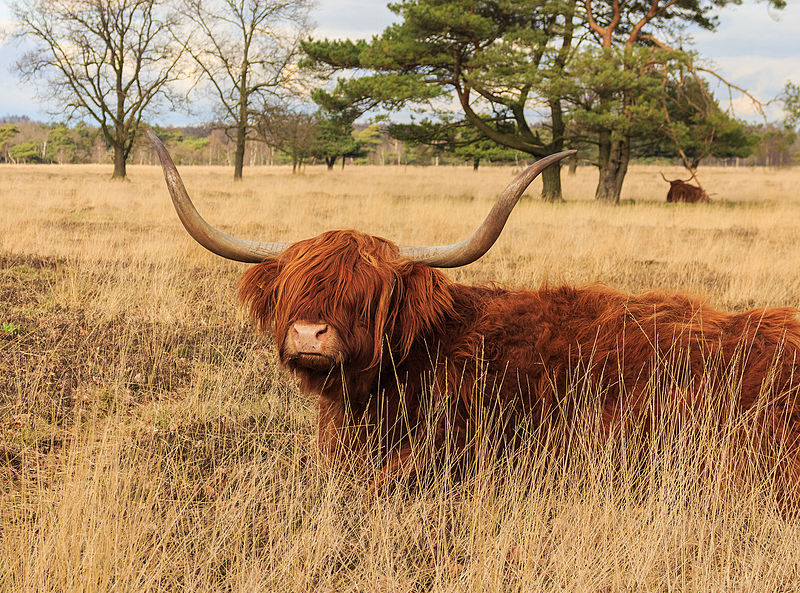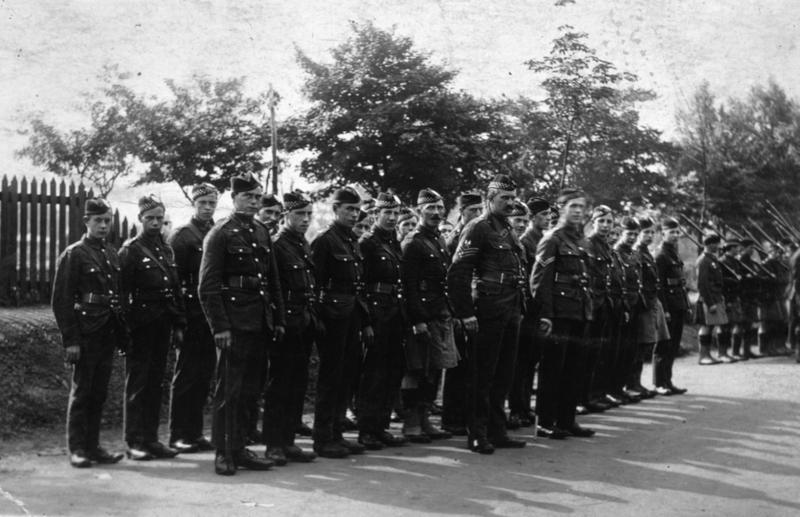Our Great Place volunteer Louise Bell tells the story behind the Slamannan War Memorial Garden.
For me, the memorial garden in Slamannan has these lovely memories, of always parking in front of it when I went to work in the library, and getting to see it in all the different seasons and weathers. It’s a spot that I’ve seen so often, and one that I think more people should pay a visit to!
War memorials are common in towns all across the country, but Slamannan is unusual in that it has more than one memorial. There is the war memorial at the end of the High Street; a Boer War memorial in front of the library; and the memorial garden just up the road.
The memorial garden was created in 2010. Within it are three stone plinths; three flag poles with flags on; a twisted propeller; and a commemorative paving stone. Below, I will tell the stories behind these various memorials within this beautiful space.
Samuel Frickleton
As you drive into Slamannan, you immediately see the name Samuel Frickleton (it’s on the sign into the village, if you’re coming from Falkirk). Frickleton was a recipient of the Victoria Cross (VC) – the highest and most prestigious award given to members of the British Armed Forces, for valour in the presence of the enemy.
Frickleton was born in Slamannan in April 1891 – born to Samuel and Elizabeth Frickleton. The family moved to New Zealand in 1913, to take advantage of the number of jobs available in the coal mining industry there; hence the reason Frickleton ended up serving in the New Zealand Military Forces in the First World War. Frickleton, and four of his brothers, served in Gallipoli in 1915 with the New Zealand Expeditionary Force. After being sent home due to ill health, he returned to the front lines of Europe with the New Zealand Rifle Brigade. It was whilst serving with these men at the Battle of Messines in 1917 that he carried out the actions that resulted in his Victoria Cross award. On the 7th June 1917, he destroyed an enemy machine gun and its crew, and then pushed forward attacking a second machine gun with the same outcome. The destruction of these guns undoubtedly saved many lives.
Frickelton is commemorated in more than one way in the garden.
- The date set into the gate of the memorial garden – June 1917 – is for the Battle of Messines.
- Beneath the large carved stone Victoria Cross is a plaque which tells the story of how he won his award.
- There is a memorial paving stone in front of the Victoria Cross sculpture, bearing his name, who he served with, and the date of the action that won him the Victoria Cross.
- All of these sit under three flags: United Kingdom, New Zealand, Scotland.
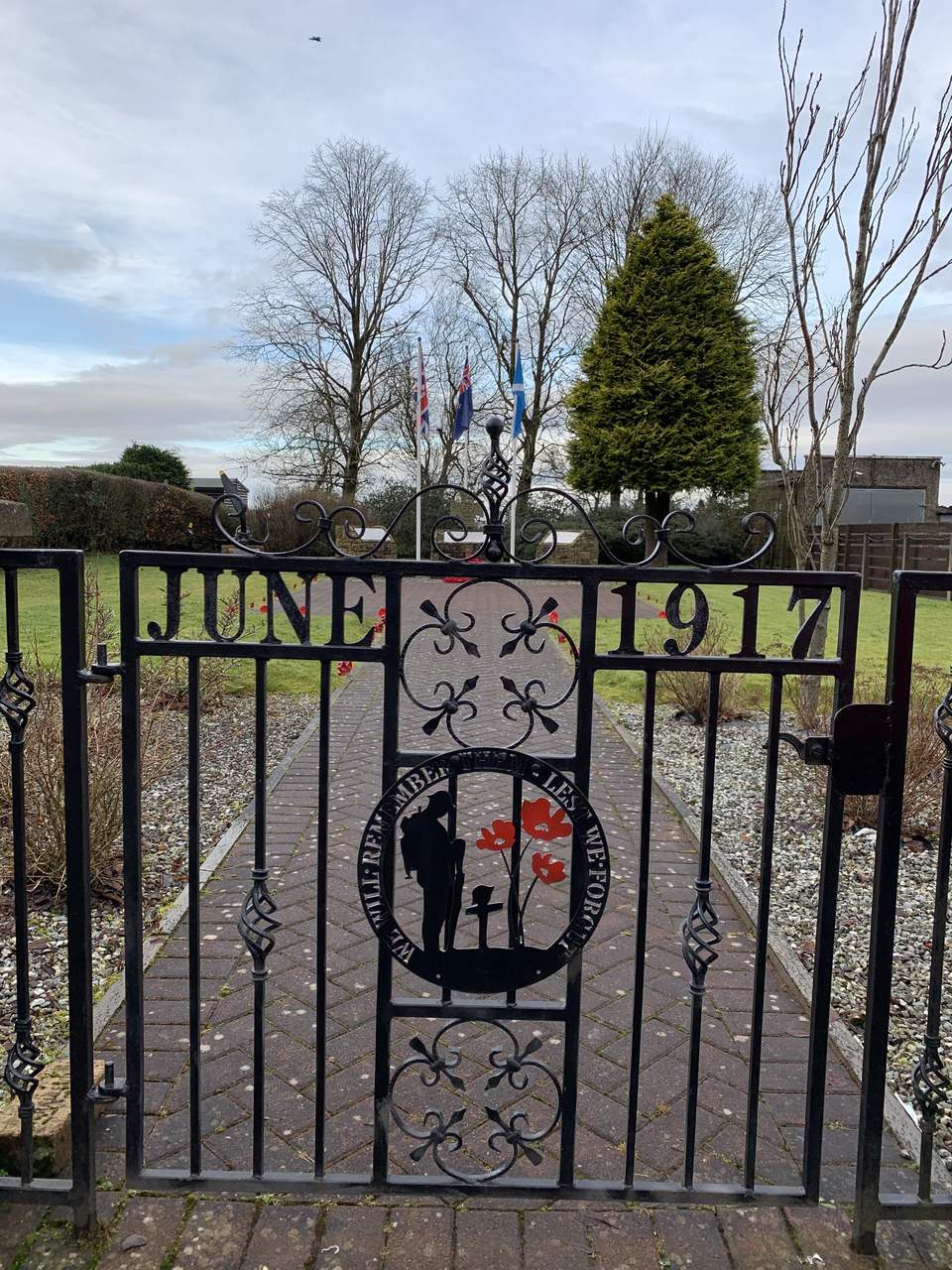

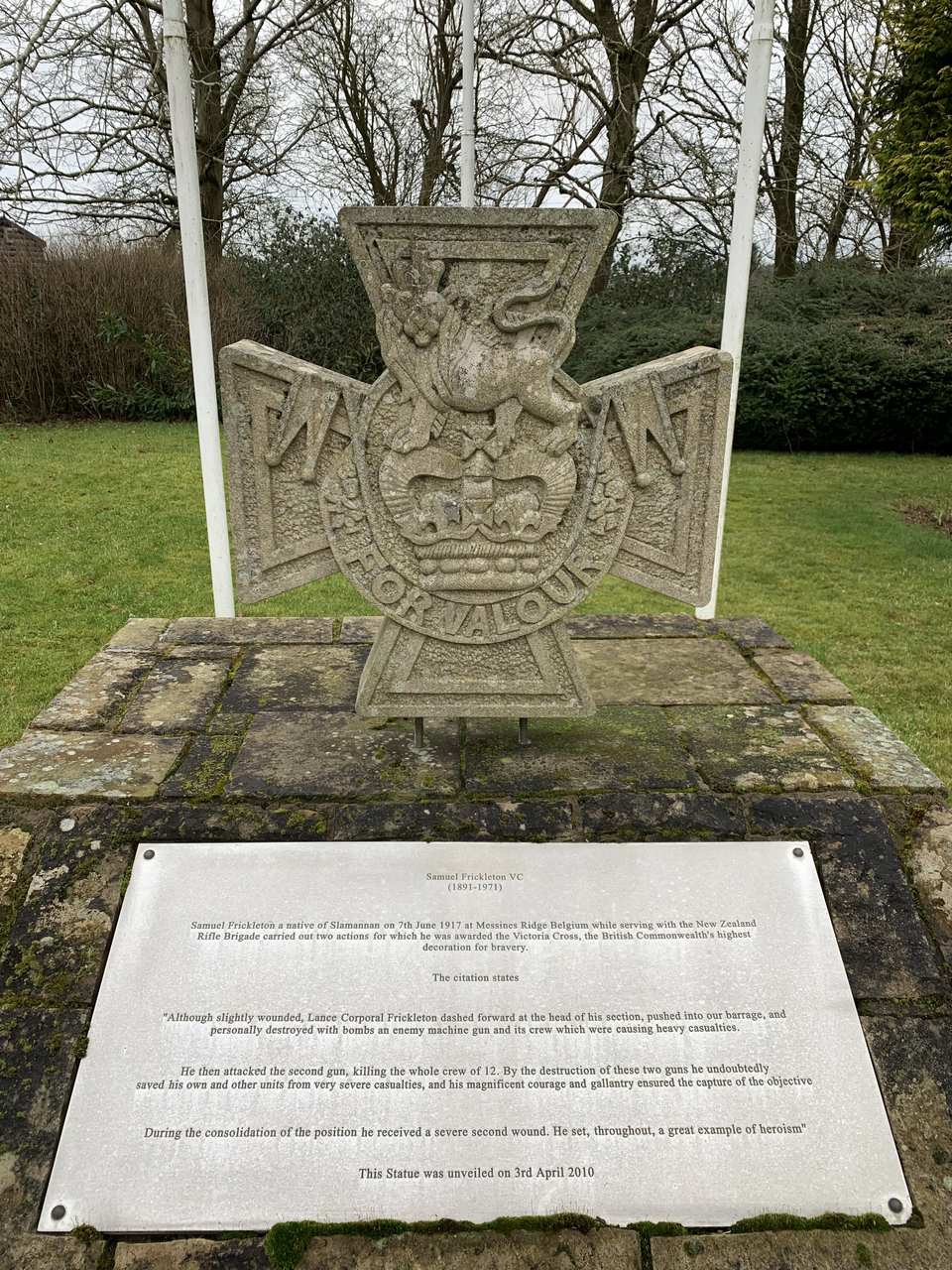

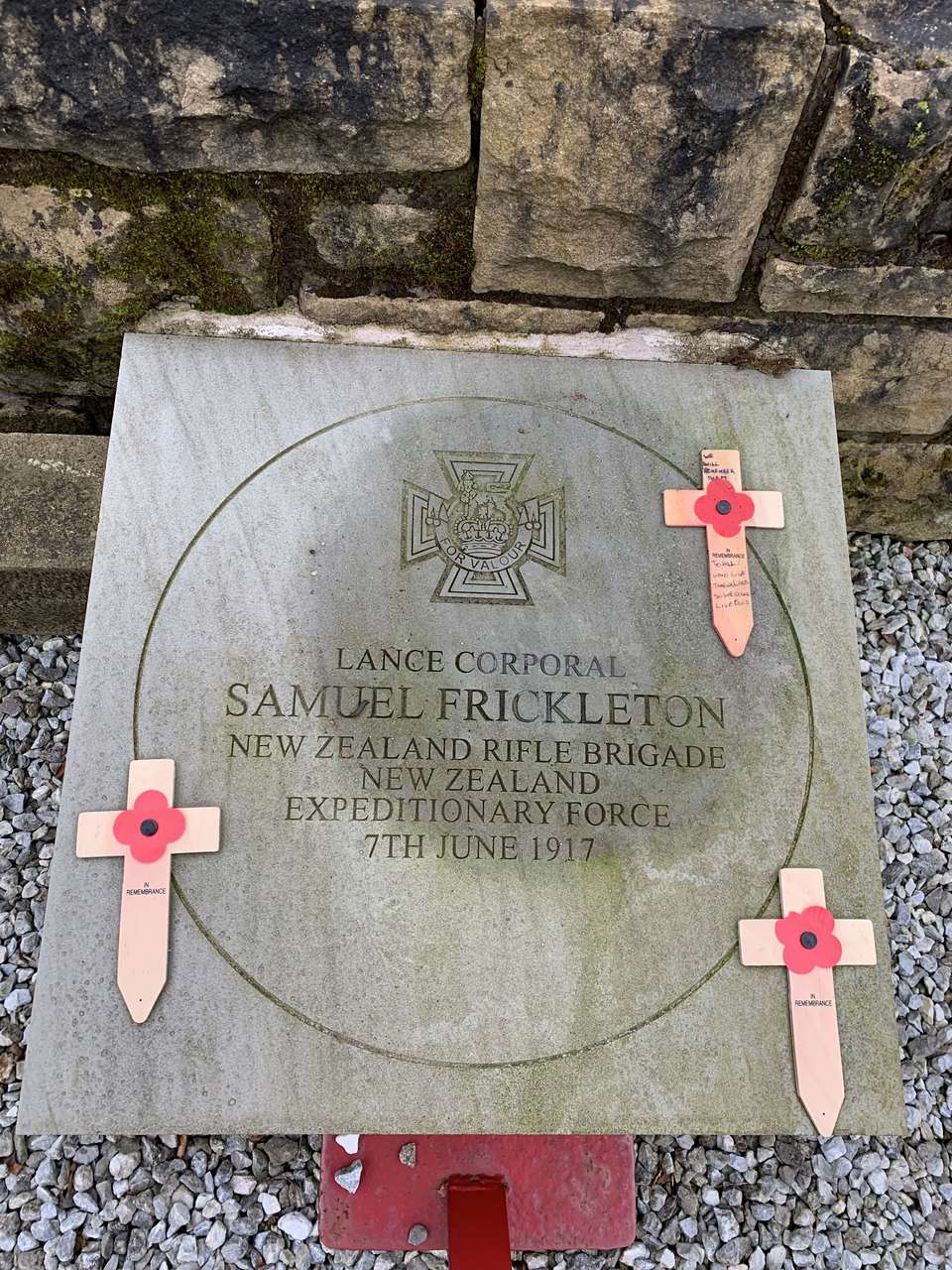

Alexander Penman
To the right of the plaques commemorating Frickleton is another stone plinth – this time commemorating Alexander Penman. Another native of Slamannan, Penman also served in the First World War. Attached to a Trench Mortar Battery, he served with the Argyll and Sutherland Highlanders, and was awarded the Military Medal (MM) for bravery in the field, in 1915. The Military Medal wasn’t established until 1916, so this would have been an award granted retrospectively. In 1918, he was awarded a bar to his medal – essentially meaning that he was awarded the Military Medal for a second time.
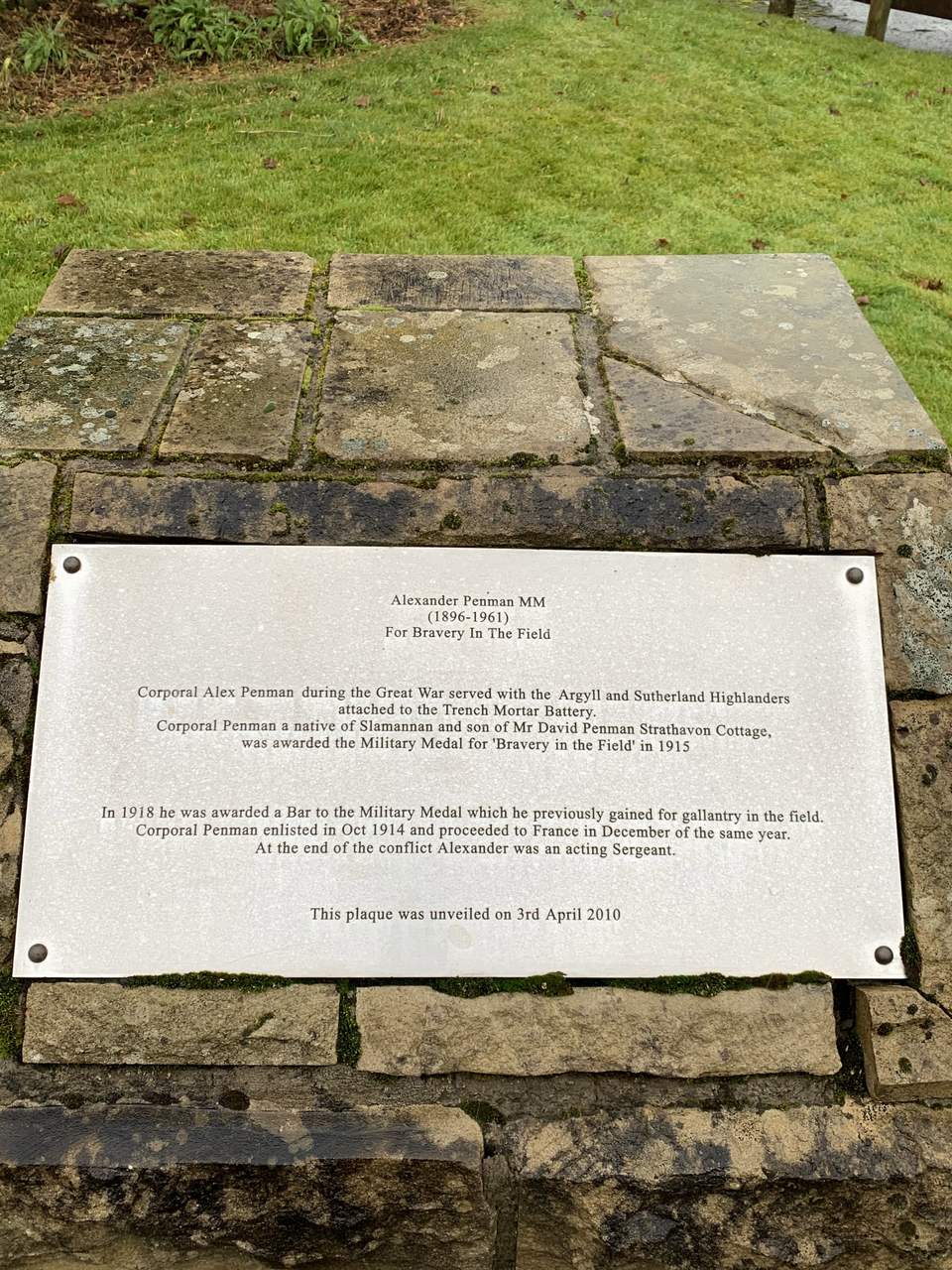

Other Conflicts
To the left of the above-mentioned memorials is a third stone plinth – this time commemorating all the conflicts and military operations that Britain has been involved with since the Second World War. All the conflicts from South East Asia to Iraq are commemorated on the plaque.
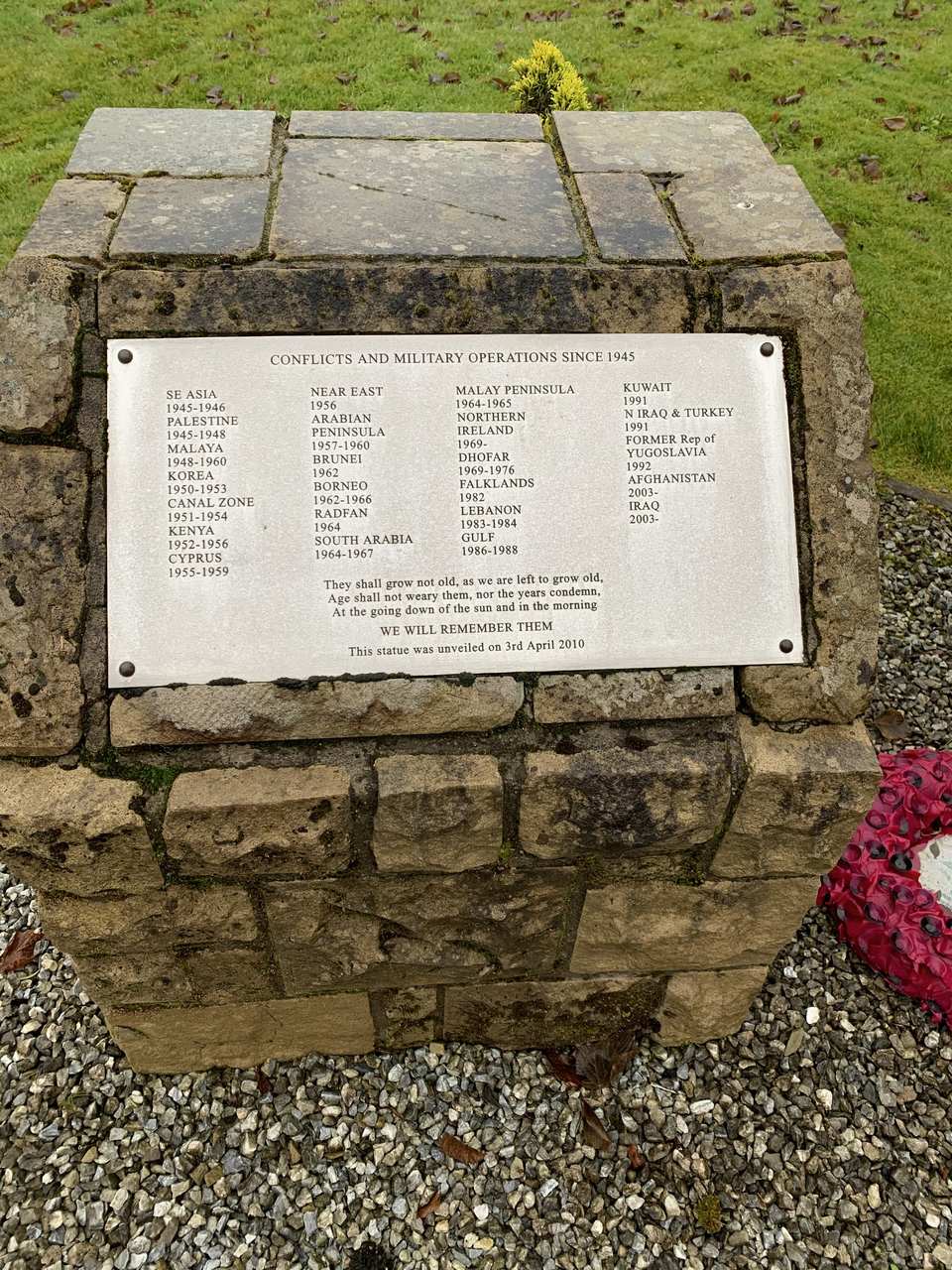

John Tristram Silvester
One of the most intriguing sections of the garden is a propeller, which lies a little behind these memorials. It’s a twisted three-blade propeller, which definitely catches your eye when you look into the garden. A plaque underneath tells you that it is dedicated to Sergeant Pilot John Tristram Silvester. Silvester was born in September 1918 and was one of John and Alice Silvester’s nine children, who lived near Stourport, Worcestershire. He enlisted with the Royal Air Force Volunteer Reserve in 1940. Two years later tragedy struck. He was flying a Spitfire on a training flight from the nearby base at Grangemouth when he crashed and was killed. It is thought that the plane might have developed a mechanical fault, which led to the fatal accident. The accident occurred at Hillhead Farm, Slamannan, which is why he is commemorated here.
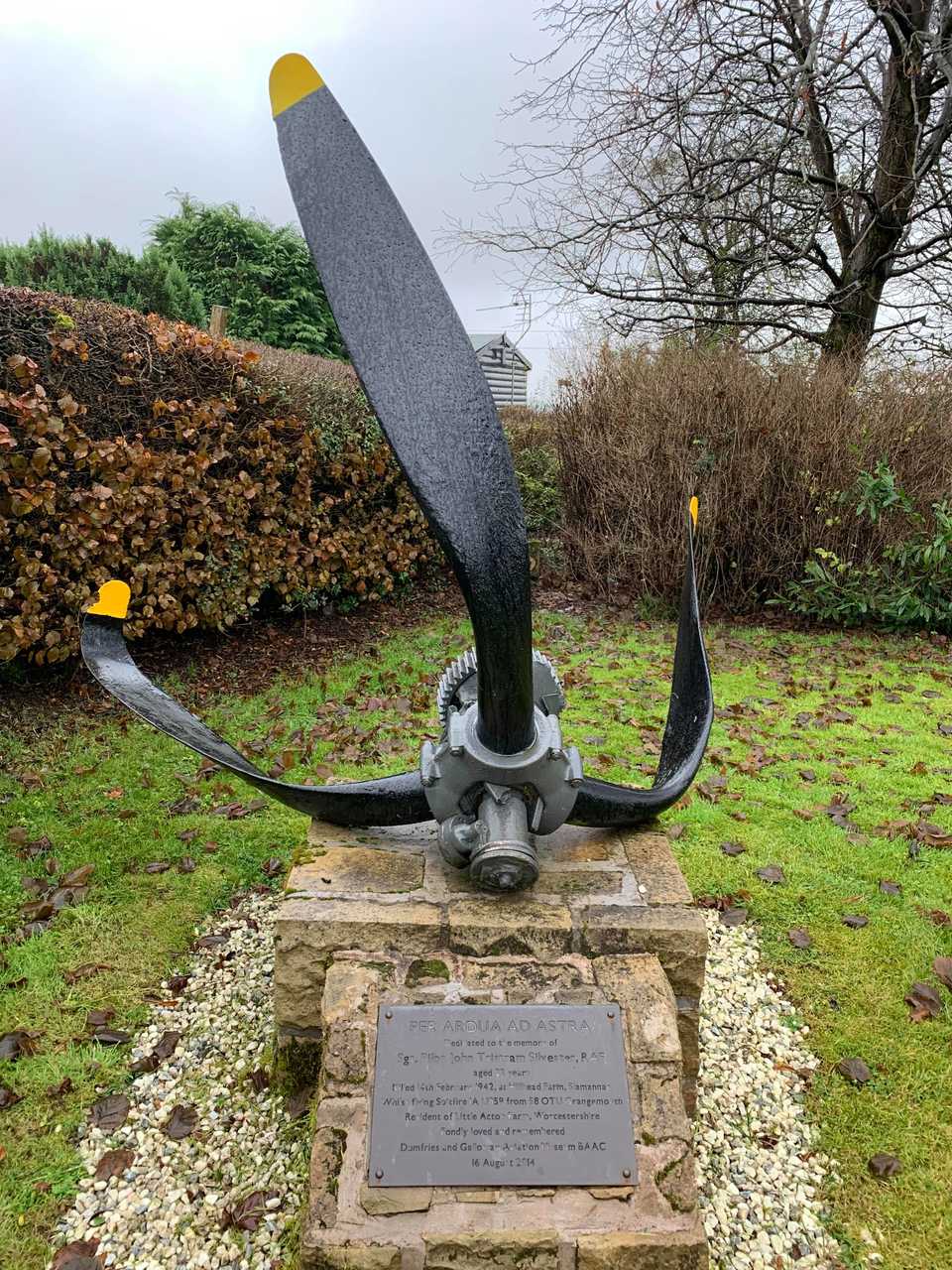



By Louise Bell, Great Place volunteer 2020. Hidden Heritage: Statues and Monuments project.
